Problems reduced with animals adapted to life in captivity
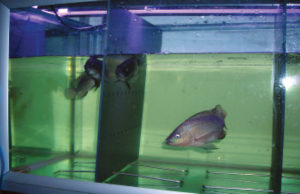
The welfare of an animal is reflected by the success of its attempts to cope with its environment. If fish can not adapt to the stress in their environments, reduced disease resistance, decreased reproductive capacity and low growth can occur.
Stress response
Stress responses in finfish can be categorized in three stages. The primary response includes the rapid internal release of stress hormones, catecholamines and cortisol into the fish’s circulatory system. The secondary response includes the various biochemical and physiological effects associated with stress and stimulated by the stress hormones. Plasma cortisol and glucose levels are typically used to measure this stage. The tertiary response includes changes to the whole animal or animal population.
We also often differentiate between chronic stress caused by a prolonged negative environment from which the fish cannot escape, such as poor water quality or aggressive individuals, and acute stress from a short, intense situation from which the fish may or may not be able to escape. Both types can cause serious growth loss and mortality in aquaculture systems.
Signs of chronic stress have been much used as indicators of well-being, as long-lasting stress responses are strongly debilitating to emotional and cognitive function. Stress-induced loss of brain neurons is, for instance, a central process behind clinical depression in humans. Research at the Norwegian University of Life Science has shown that fish react to stress in a similar manner, by inhibiting proactive behaviors such as feed intake and reducing neural plasticity in the hippocampus.
Domestication: adaption to environment
Many teleost fish species in aquaculture today have undergone a relatively short period of domestication, compared with other groups of production animals. Disregarding the current debate as to whether fish should be considered sentient beings, it is evident that the potential for welfare problems is reduced in animals that have adapted to life in captivity over several generations.
Domestication is therefore a process that is closely linked with and important for any fish-breeding program. Furthermore, even the most domesticated species have nervous systems and are capable of preferences and motivations. For both ethical and economic reasons, it is therefore beneficial to actively select animals that thrive well in the rearing environment.
Welfare affects production
Fish under intensive culture conditions are exposed to acute and chronic stressors that have adverse effects on growth, reproduction, immunocompetence and flesh quality. Interestingly, sensitivity to stress and the magnitude of physiological responses is proven to be heritable.
As in many other vertebrates, the concentration of the steroid hormone cortisol in blood is a major indicator of stress in fish. This hormone mobilizes the biological responses necessary to meet stress situations but is also the causal factor for many of the deleterious effects of stress, including reduced growth, altered reproductive function and cognitive effects.
The authors are currently developing lines of rainbow trout with high and low levels of cortisol response to stress. Results so far suggest that much can be gained by implementing such selection in aquaculture breeding programs (Fig. 1).
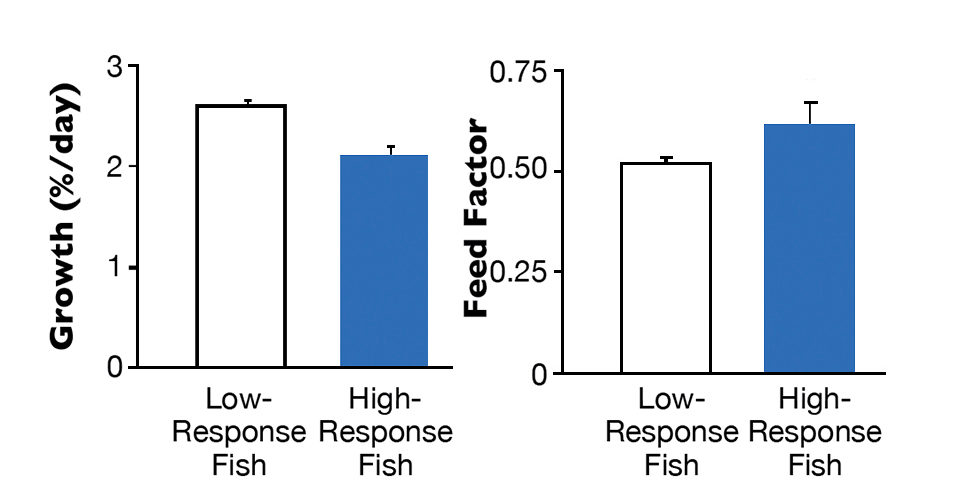
Current knowledge on stress physiology suggests that selection for growth rate and low stress could have positive effects in the fish production cycle through increased end product quality, animal welfare and disease resistance; and decreased feed waste and frequency of premature males.
Stress and cognition
A particularly interesting finding is that the low-response fish retain learned responses better. This suggests an effect of stress on cognitive processes in fish, as has been demonstrated in mammals.
In short, stress inhibits memory and learning. This reduced ability to use learned information leads to reduced predictability and control, and in turn, further stress. This spiral of events has a major impact on the quality of life in humans, so it is very interesting to find at least the rudiments of these same mechanisms in fish.
Improving welfare
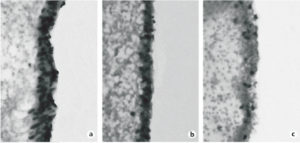
In other farmed animals, modifications of the environment have prevented negative side effects of selection or even allowed improved output levels, but this is not always easy to achieve in aquaculture. A more sustainable solution is to redefine breeding goals on a broader perspective. This implies selecting both for more traits like specific disease resistance, general survival and fertility, and, importantly, improved welfare.
As indicated above, negative side effects of artificial selection on animal welfare have been seen when breeding programs have failed to pay due attention to the principle of homeostasis. The biological consequence of the limited resources available in any organism is the tendency for negative genetic correlations being generated among selected traits. This can also lead to negative side effects in traits not selected for, such as leg weakness in broiler chickens. However, it is possible to obtain positive overall selection responses for all traits if they are properly monitored and included in the breeding goals.
The challenge that still needs to be addressed is how to select for low-stress individuals in an efficient way. Many methods have been suggested, and the ideal approach will be inexpensive, easy to measure, and at the same time, measurable on the breeding candidate itself.
(Editor’s Note: This article was originally published in the May/June 2009 print edition of the Global Aquaculture Advocate.)
Now that you've reached the end of the article ...
… please consider supporting GSA’s mission to advance responsible seafood practices through education, advocacy and third-party assurances. The Advocate aims to document the evolution of responsible seafood practices and share the expansive knowledge of our vast network of contributors.
By becoming a Global Seafood Alliance member, you’re ensuring that all of the pre-competitive work we do through member benefits, resources and events can continue. Individual membership costs just $50 a year.
Not a GSA member? Join us.
Authors
-
Hans Magnus Gjøen
Norwegian University of Life Science
Department of Animal and Aquaculture Sciences
P. O. Box 5003
1432 Ås, Norway[111,110,46,98,109,117,64,110,101,111,106,103,46,115,117,110,103,97,109,46,115,110,97,104]
-
Øyvind Øverli
Norwegian University of Life Science
Department of Animal and Aquaculture Sciences
P. O. Box 5003
1432 Ås, Norway
Tagged With
Related Posts
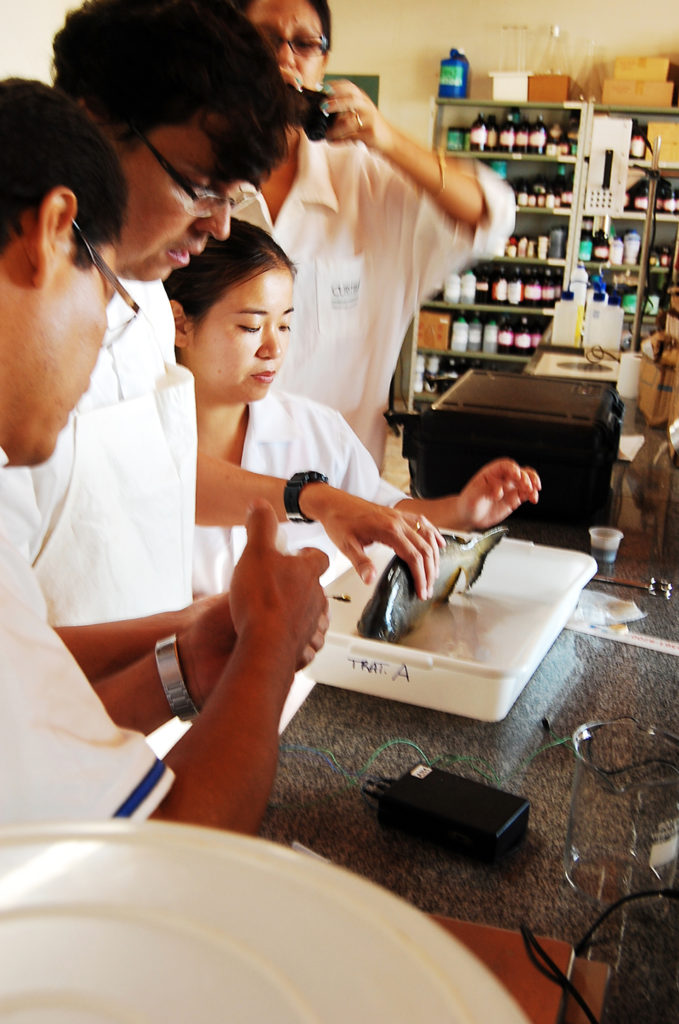
Health & Welfare
Brazil survey: Animal welfare perspectives vary between producers, researchers
Survey participants also indicated that, in general, Brazil’s fish-farming industry is addressing elements of animal welfare to some degree, but can improve.

Aquafeeds
Alternative feed ingredients support continued aquaculture expansion
Identifying sources for essential macro- and micronutrients is important, as well as understanding how best to manufacture feed to required physical specifications when using these new raw materials.
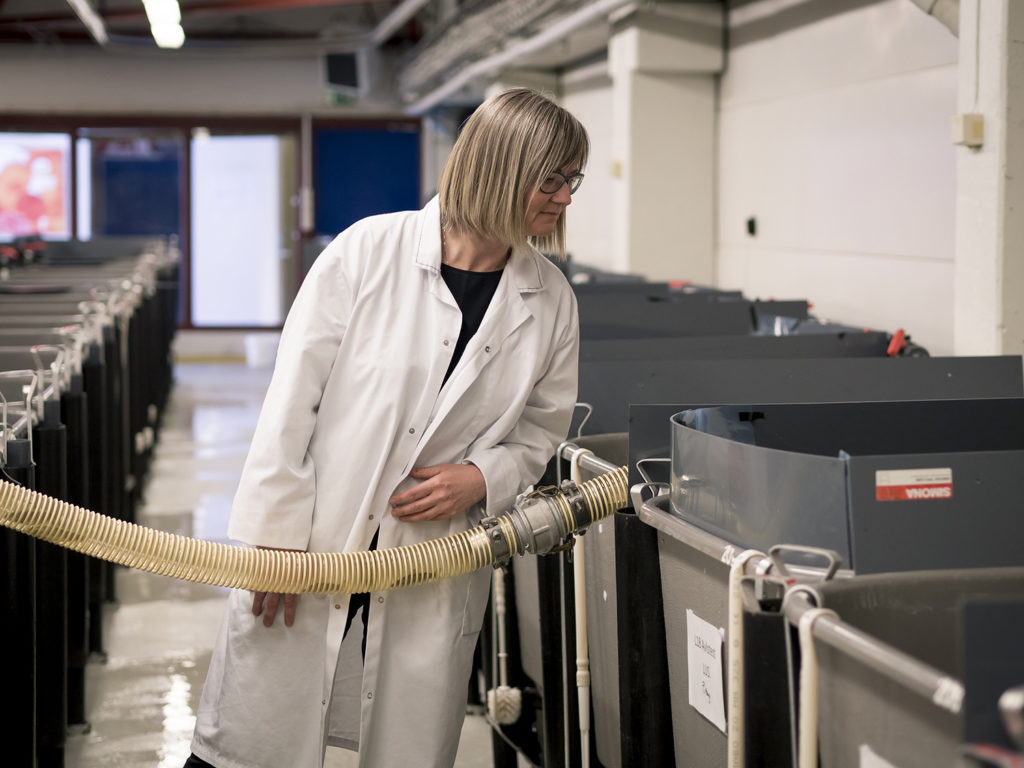
Innovation & Investment
AquaGen CEO: Genomics are transforming aquaculture
The CEO of AquaGen knew that the Norwegian research group’s work in genomics was key to the salmon industry’s future. And that was before she even worked there.

Intelligence
Aquaculture 2016: Examining the industry’s role in the food system
A wide range of important topics was discussed at the Aquaculture 2016 conference and trade show in Las Vegas last week. Editor Emeritus Darryl Jory shares his notes from the four-day event, which occurs every three years.


